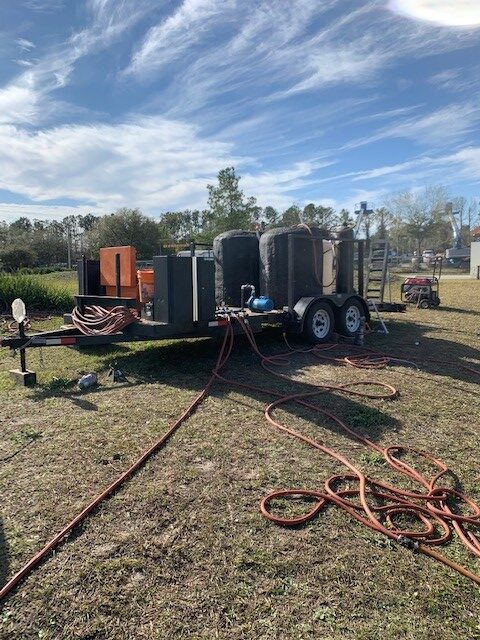microFUEL
microFUEL is mixed with water/groundwater and added to existing remedial systems, sprayed into open excavations, injected via DPT or permanent injection wells, or recirculation events.
About microFUEL
 microFUEL is a proprietary blend of macro- and micro-nutrients utilized for in-situ bioremediation. The blend is mixed with potable water or extracted groundwater and introduced to the subsurface through a variety of methods. Nutrients utilized in the blend are ammonium nitrate, diammonium phosphate, and magnesium sulfate. These nutrients are blended in percentages based upon weight, creating a product that will provide a long-term electron acceptor and nutrient source necessary for petroleum-degrading microorganism populations to flourish.
microFUEL is a proprietary blend of macro- and micro-nutrients utilized for in-situ bioremediation. The blend is mixed with potable water or extracted groundwater and introduced to the subsurface through a variety of methods. Nutrients utilized in the blend are ammonium nitrate, diammonium phosphate, and magnesium sulfate. These nutrients are blended in percentages based upon weight, creating a product that will provide a long-term electron acceptor and nutrient source necessary for petroleum-degrading microorganism populations to flourish.
Petroleum-degrading microorganisms require nutrients, terminal electron acceptors (TEAs) for respiration, and an electron donor (TPH/BTEX) for growth and energy. TPH impacted sites already contain the electron donor supply, but are devoid of TEAs or nutrients. The lack of TEAs and nutrients causes microbial growth to decrease, inhibiting biodegradation of contaminants. Due to the large mass of hydrocarbons at some sites, it can be challenging to get sufficient amounts of dissolved oxygen (DO) to the whole treatment zone. The half-life of DO is short and only a small zone of oxygen and aerobic conditions radius of influence (ROI) can be created/sustained. Anaerobic conditions surround these aerobic zones, which require other TEAs to maintain robust microbial activity, causing anaerobic oxidation of petroleum hydrocarbons.
How it works
To achieve contact, microFUEL is mixed with water/groundwater and added to existing remedial systems, sprayed into open excavations, injected via DPT or permanent injection wells, or recirculation events. Utilizing existing remedial infrastructure can ensure the injectate is dispersed through the subsurface increasing contact with contaminants. Injecting microFUEL into permanent injection wells and extracting from select wells will help create hydraulic gradients allowing the product to be dispersed across the treatment zone. Injecting microFUEL causes shifts in DO, ORP, and conductivity, and these parameters should be monitored during injections to determine dispersal effectiveness. When injecting microFUEL, the total amount of product is determined by using a site-specific mass balance approach based on petroleum hydrocarbon concentrations. microFUEL is then mixed with water so that 0.2 to 0.5 pore volumes (based on the area and depth of the dissolved hydrocarbon plume) of solution is injected across the treatment zone. Dosage rates should be based on changing hydrocarbon concentrations over time so residual nitrate/ammonia is not left in the groundwater, creating exceedances of secondary drinking water standards. After injection, microFUEL will migrate with the natural seepage velocity to stimulate bioremediation across the site for at least 6-12 months.
